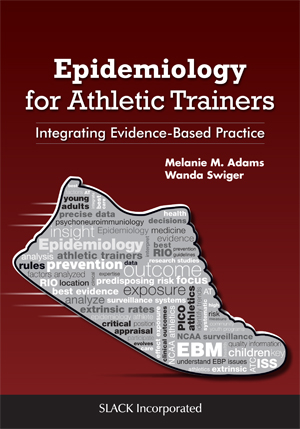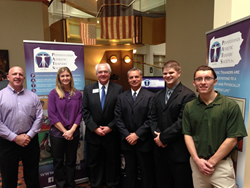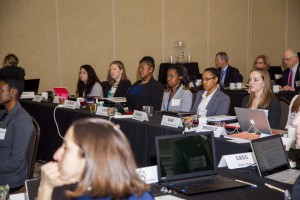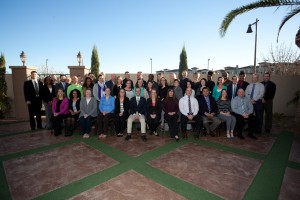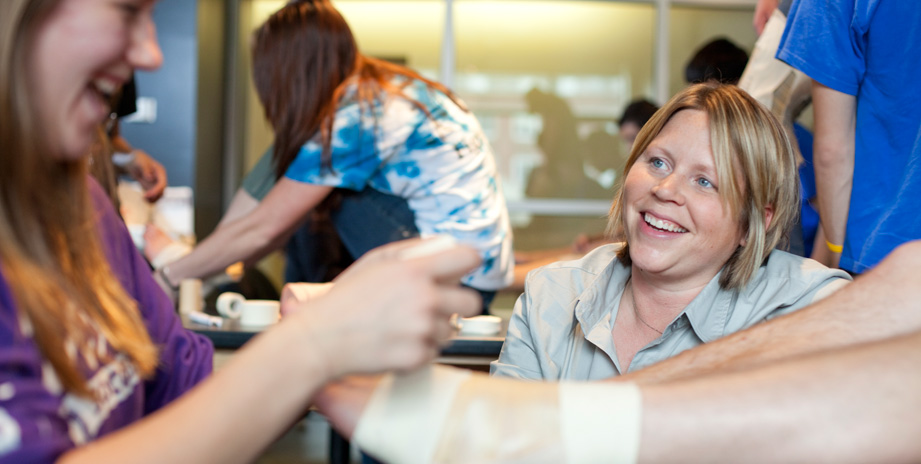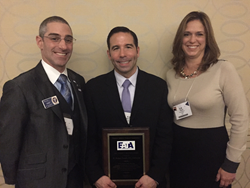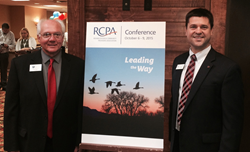
Some of the hardest-working people in sports are often unseen, behind the scenes: in the locker rooms and on the sidelines of the world’s biggest sporting events.
They’re in charge of keeping teams’ most valuable assets — their players — healthy. Yet despite being pivotal to the sport, athletic trainers go virtually unnoticed; at least, that was the case until a 20-year-old lawsuit against Peyton Manning resurfaced last week, in which Tennessee’s former head athletic trainer alleged that Manning sexually assaulted her as she attended to his injury.
The number of women in coaching roles and in athletic director positions has increased in recent years, but men still overwhelmingly dominate the field in the top athletic training jobs. In the years since Manning’s alleged incident, the number of women holding head athletic trainer positions at Division I schools grew only 2.6 percent. At present, women hold roughly 17.5 percent of Division I head athletic trainer positions, according to a 2014 study conducted by the group Women in Collegiate Sport (WCS).
So what is keeping women out of these roles? Is it systemic gender discrimination, or something else? More importantly, do women in athletic training roles have a glass ceiling?
To understand, it makes sense to first evaluate where women are represented in the athletic training industry as a whole. National Athletic Trainers’ Association president Scott Sailor told Sporting News that he estimates about 54 percent of the 43,000 members of the NATA organization are female.
“We, like the rest of sport, are probably working to catch up,” said Sailor, mentioning the 1972 Title IX push for women’s sports plays into those numbers, which are on the upswing. “We’re an evolving profession. We’re fairly young. 1950 is really where we count the beginning of our professional association. So we’re continuing to improve and we see more and more women moving into roles that were, traditionally in the early days, male roles.”
Julie Max, former NATA president and head athletic trainer and undergraduate professor at Cal State Fullerton, says the number of female undergraduate enrollees has “doubled” in the last 20 years.
Sailor’s numbers support Max’s experience.
“We look at the graduates from colleges and universities today with accredited programs in athletic training and nearly two-thirds of those people are females coming out with degrees in athletic training,” he said.
But according to the WCS report, more than two thirds of the head athletic training jobs at universities are occupied by men.
Lori Sweeney, who was the head athletic trainer at Saint Joseph’s (Pa.) University for more than 20 years, said she didn’t feel women were underrepresented in the industry overall, “but definitely in head positions or director positions, absolutely.”
“I remember when I was only one of 13 percent of women in the country who had (a head athletic training job).”
Does ladder go up?
How does one account for imbalance in the number of women who hold entry-to-mid-level athletic training jobs compared to head roles?
Part of it has to do with the weight traditional gender roles still carry, say women who have held the top roles in their sports.
Ariko Iso, the head athletic trainer for Oregon State’s football team, told SN that sports culture in general can be a barrier. Iso became the first female head athletic trainer in the NFL in 2002, when the Steelers hired her following the completion of an internship with the team.
“Maybe there’s a football coaching staff who maybe isn’t receptive to having a female working with his players — the old-school mentality, 20, 30 years ago,” Iso said. “I would say that’s old-school thinking — and some coaches are still in that old-school mentality — but I would say more and more people are thinking of team medical staff as medical staff and not the female/male dynamic.”
Iso had an overwhelmingly positive experience with the Steelers, noting that while Pittsburgh’s front office was progressive in its hiring practices, other clubs and owners presented a certain degree of pushback.
“The Steelers — you’d think one of the oldest organizations would be the old-school boys club — but they were really, from the coach down, neutral. They were OK with having a female,” she said. “After I’d been in the league a few years, I did realize that there were some people — they were all nice to me, don’t get me wrong — that were like ‘Oh, who is she? What is she doing here?’”
More than a decade later, the Steelers remain the only NFL team to employ a woman in a head athletic training role. Layla McCall Stafford, who interned in Pittsburgh with Iso, echoed how ownership’s move to hire a woman continues to be a ground-breaking action in the NFL.
“I think it has to do a lot with ownership as well as how receptive the players and the staff are to a female being there,” Stafford said. She also broke ground as the first woman promoted to the head athletic trainer role with Georgia football.
Not deterred
Most of the women interviewed for this story agreed that coaches who employ the “old-school” thinking of traditional gender roles remain, but their attitudes are not necessarily prevalent.
“I think it’s just a misogynistic attitude that a woman can’t do the same job a man can,” said Sweeney, whose work is primarily in the college sports sector. “I’ve had fellow athletic trainers say that the coach doesn’t want women there because they think that the women are going to distract the guys.”
“A distraction. … Why wouldn’t a guy be a distraction any more than a woman?”
MORE: Female NBA pioneers
Not every player or coach considers women a distraction.
Sue Falsone can attest to that. Falsone became the first — and currently, only — woman to hold a head athletic trainer title in Major League Baseball, when the Dodgers hired her in 2012. She has since left the organization to open her own practice.
“I think our society really is getting open to more different lifestyles,” she said.
As society’s views on women in the workplace evolve, so too does the perception of women in sports — albeit more slowly. The flood of women in athletic training roles at the high school and collegiate level is a tidal wave helping change attitudes from the amateur level up.
“We do see so many women at the high school level and the collegiate level that, at the professional level, it never becomes an issue with the athletes. They were so many in high school and college that it was never any different (at the professional level),” Falsone said.
Max, for example, has more women than men on her athletic training staff at Cal State Fullerton.
“The younger and up-and-coming professional athletes don’t really have an issue with (female ATs) because at this point, they’ve grown up with it. If it’s not that big of a deal to them, then it becomes less of a big deal for the organization.”
That jives with NATA president Sailor’s evaluation of how the athletic training landscape’s evolution reflects the rest of society’s: “Society seems to be more open and finally acknowledging that it’s important that we have good people in important roles and that person may be a male or may be a female, but the most important thing is the person and not their gender.”
Tipping the work-life balance scales
Even though the attitude toward women in athletic training appears to be shifting positively — all the women SN spoke to noted that they had overwhelmingly positive experiences as groundbreakers in their field — there are still some latent challenges in the job description that make it difficult for women to advance, or feel comfortable.
Extensive travel, in addition to long and unusual hours, is not conducive to maintaining a work-life balance, which often negatively burdens women. Especially women who intend to have children.
“As a female (the athletic training field) is very competitive and then you get married, you have a family, you get time off… sometimes it’s hard to accommodate those changes while you’re in charge of football,” Iso said. “Unless you’re going to take a year off from your job, it could be difficult to juggle with games and that work-life balance.
“I think for those people who want to have a family, I think there may be a glass ceiling.”
Even those women who achieve the coveted work-life balance in a top role are sometimes met with resistance.
“I think that if you try to have life balance, there’s push-back from higher-ups and I think it’s easier for men not to have a life balance,” Sweeney said.
Women who intend to ascend to the top echelon of athletic training positions often have to sacrifice marriage and the decision to have children to do so.
“I think sometimes women just get underrepresented at the professional level for a variety of reasons but some of it is definitely family choice,” Falsone said, citing MLB and its long schedule as one of the most difficult jobs to balance.
“I’m not married. I don’t have children. I’ve definitely made certain choices in my career, that if I did have a husband and children, I probably wouldn’t have made.”
Need for change
But even the smallest of logistics have a greater impact on women trying to navigate this male-dominated field — the layout of stadiums, for example, often forces trainers to walk through locker rooms to reach training rooms.
“The locker room is typically where the athletes change clothes, so it can be a problem to have a female walking through the locker room at any point in time — and you find that setup in typically all NFL locker rooms,” Stafford said, referring to the perceived invasion of privacy.
Separately, Sweeney echoed that same complaint: “It’s just not set up to be conducive to privacy. Why isn’t there a separate space for (training rooms)?”
Often, because there are so few women in the top athletic training positions, there’s not a separate space for them to change or shower after finishing up their duties. It makes women consider the day-to-day logistics of simple tasks that men in similar roles don’t necessarily have to.
“When I went to the original Wrigley Field, there was not even a bathroom in the manager’s office, so I’d have to stand with the fans in the concourse to use the bathroom. Or, there’d be no place for me to change so I’d change in the janitor’s closet and there’d be a broom and a mop and that whole thing,” Falsone said, noting that she ran into that same scenario several times throughout the season.
MORE: NFL open for more women in executive positions
Compensation, too, is an issue in both society and athletic training. According to the Institute for Women’s Policy Research, the wage gap between men and women in the U.S. remains virtually unchanged since 2001. In 2014, women earned 79 cents for every dollar that a male colleague made.
Sweeney even said she knew of women who were head athletic trainers, whose assistants made more money because they were men.
“There’s just no reason that they shouldn’t be making the same amount of money,” Sweeney said. “If you bring someone in and they have certain salary requirements that you’re willing to meet, then you need to make sure that the person who is in charge of them is making more than those people are.
“I think it’s just gender prejudice.”
Pointing out issues pertaining to the advancement of women in athletic training jobs is not meant to be an indictment on any one person or organization. But shining a light on some of the roadblocks that some successful women have in head athletic training roles faced creates an opportunity to do better moving forward.
“In recent years, we’ve been able to look at the women in our profession as some of those that are the real groundbreakers,” Sailor said. “We’ve seen them take positions in areas where only 20 years ago, society would have said ‘There will NEVER be a woman working with an NFL team.’”
Progress, however slow, is still progress.
CLICK HERE FOR ORIGINAL ARTICLE


